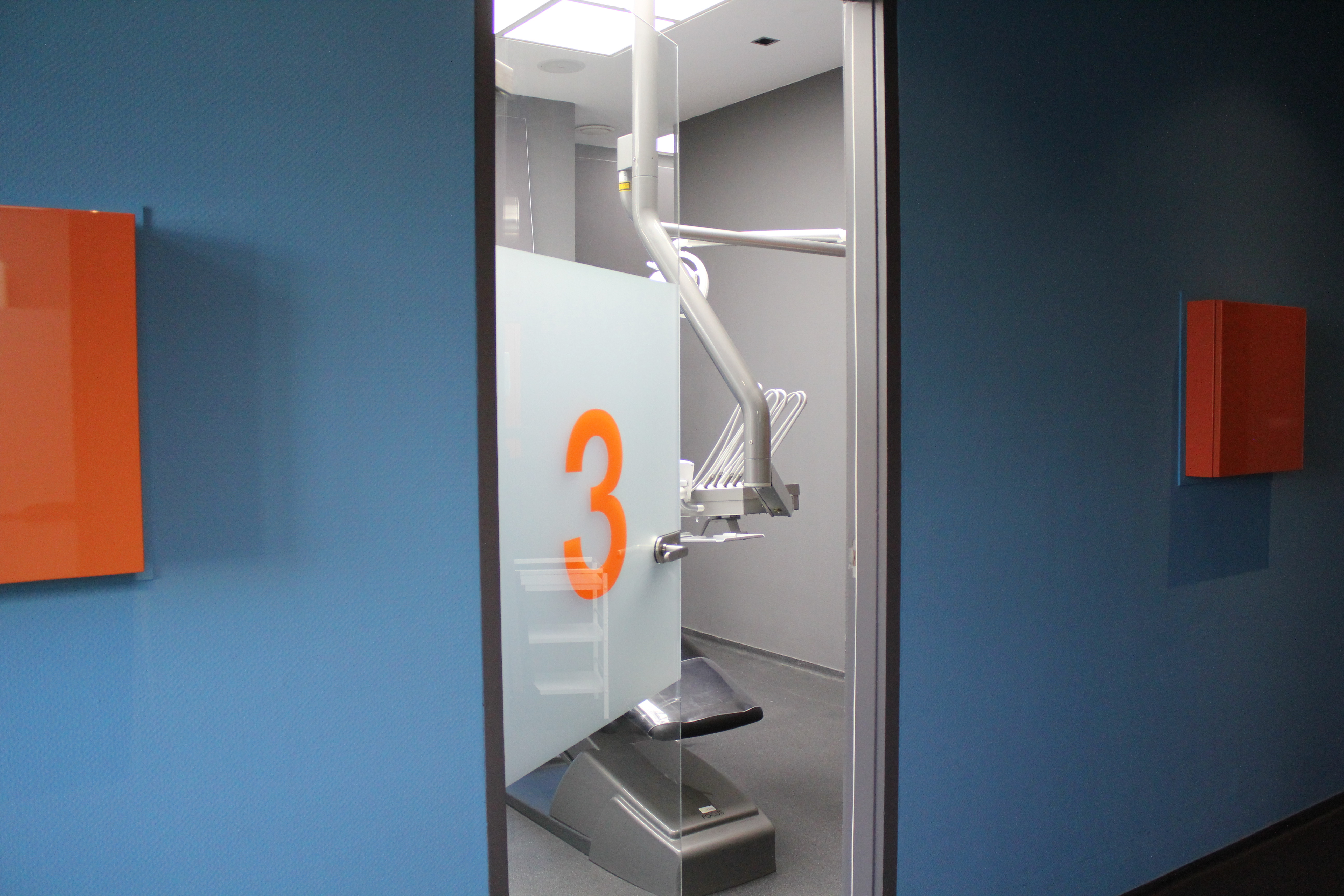In principle you are never too old for an implant. Implanting is possible provided that you are healthy and that you are able to physically withstand the treatment. It is regularly used with success for people aged 90+.
People can be too young for implants. If a tooth is to be replaced whereby the gums are visible (specifically in relation to the top teeth) then it can be better not to have an implant before the age of 18. Up to that age it is wise to replace teeth or molars with a temporary structure.
The jaws must be fully developped and not all people achieve this by the same age. If implants are fitted too early the implant will remain “fixed” in its position, while the other teeth develop even further. As a result of this the implant will ultimately remain above the level of the adjacent teeth. This is quite unattractive and very little can be done about it subsequently.
No. An effective local anaesthetic is used before surgery so no discomfort is felt as implants are placed. Any mild discomfort that may be experienced after surgery can be controlled with conventional painkiller tablets.
Difficult. The bone fuses fully with an implant. If bone grows against an implant surface it becomes impossible te screw out an implant. In that cas an implant has to be drilled out and this generally results in considerable bone loss.
- Implants have a very good long-term prognosis compared to other dental solusions
- Your own teeth or molars do not need te be ground down (as with a bridge)
- Implants are secured to the jaw and allow a fixed structure te be created
- An implant crown or bridge is more comfortable than a removable structure
- Implants restore your ability to chew
- Because the teeth are secured you no longer need to be insecure when in the company of others
- The structures are strong and are not sensitive to dental decay
The costs of a treatment depend on many factors. What is the situation with your teeth? What is it you like to achieve? Are you missing teeth or molars, and if so how many? Is there sufficient bone present for fitting an implant? What temporary arrangement would you like to have?
It is impossible to imagine restorative dentistry today whitout implant treatments. If implants are indicated on time the treatment does not need to be more expensive than having a bridge fitted, for example, and the time it takes for treatments is not much longer. However, if inflammation has been present around a tooth or molar for a longer period of timeit will be necessary to repair the bone and the treatment will therfore take longer and be more expensive. In case the treatment will also be more intensive.
The life of implants increases as knowledge and experience of implantology increases. Research has shown that in the lower jaw 96% of implants stil function whitout any problems after 10 years. The prognosis in the upper jaw was always slightly lower than 93%. The reason for the differnce is the somewhat more brittle structure of the bone in the upper jaw. These percentages are expected to be higher for the implants that are currently being fitted because the surfaces of the implants and the surgical techniques have improved considerably compared to 10 years ago.
From a technical point of view this is possible, however, it is not recommended. These structrures often break. Your own tooth has a periodontal ligament that allows a small amount of movement. An implant, however, allows NO movement whatsoever because it is anchored rigidly to the bone. Because of the difference in movement then all presure is applied onto the implant as a result of which the screw in the implant can become damaged and the implant can even break. The natural tooth usually comes loose from the bridge as a result of which it becomes decayed.
Crowns and bridges on implants can generally be made in such a way that no one notices the difference. The difference compared to your own theeth or molars can only be seen on very close inspection, however, this also applies to normal crowns and bridges.With good execution of direct tooth replacement (specal treatment concept) and our in-house porcelian technician, all facilities are created in order to achieve a beautiful result.

